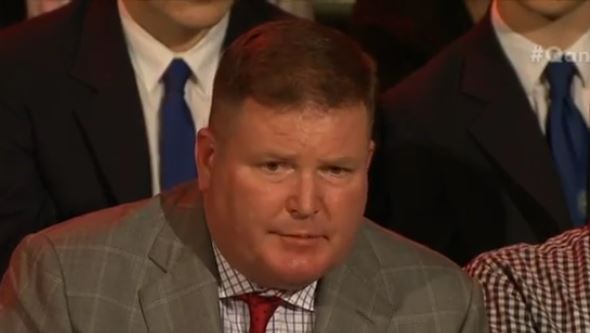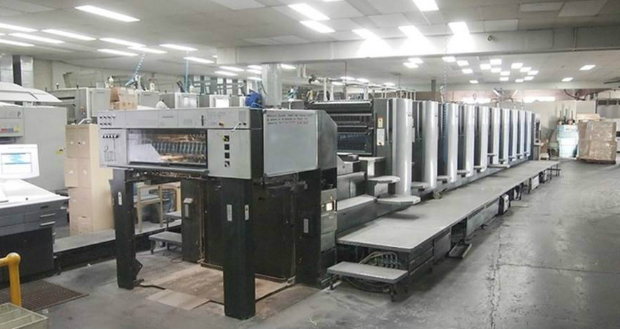
The Printing Industries Association of Australia (PIAA) operated at a loss of $1.4m in the 2017 financial year, with its membership base dropping from 1066 to 621 members, 139 of which are non-financial, and full-time staff down from 16 to seven.
The PIAA says part the big losses can be attributed to the revaluation losses on land and buildings, which account for $571,000 of the total amount. Taking the figure into account, the operating loss of the organisation is $831,000, down from $1.2m in the previous year.
However Andrew Macaulay, CEO of the peak print association says, “We are heading towards breaking even right now. We can see that the last of the significant structural changes which needed to be made. We closed Future Print, which cost the organisation structurally, but is removing another cost burden to the association.
“The PIAA is getting up, fitter, leaner and better.”
As for membership numbers, Macaulay attributes the change to the broader trends in the industry in general, as more businesses merge, making one member out of what may have been five.
He says, “We are getting the members back, and we are seeing consolidation the industry. It is not unusual to have one member which represents what two or three years ago was five members, due to mergers and acquisitions and consolidation.
The big back to back losses were preceded by a positive figure of $386,000 in 2015, a year in which the organisation made $1m from the sale of assets – mainly its Auburn national headquarters – helping to balance its books.
Macaulay explains, “The organisation had to face a change in industry, and changing dynamics. In the past 10 years that has been obvious. It had not changed its cost structures and business models. Instead of taking a strategic view at a government level, it was forced to make dramatic change.
“We have reduced the operating loss from the year prior. We have gone from nearly 40 staff to 25 staff when I started, to six staff today. So there is a structural cost and change in that.
“Revaluations had to be made on assets, as they were not valued as they should have been.
“In WA there was a property slump, and property which needed maintenance. We did not have the buoyant offset from the upswing in property prices in the Sydney market.
Part of the changes involve the organisation using its previous state offices as sources of revenue, with Macaulay saying modern businesses do not need physical locations in the same way they did in the past.
He explains, “We had been operating in grossly inefficient way. Modern service delivery does not require you to have people in every city in the country. One of the great myths was that we had staffed offices in all these cities. A majority of time the staff were out, in industrial relations courts, or interstate completing activities.
“We have had on the ground meetings in Perth last week, in Brisbane, in Adelaide, and we will have meetings in Sydney tomorrow, as well as the National Print Awards.
“But you do not need the incredible overhead of running an office to do that, because what we need is flexibility and more efficient operating.
“Where the organisation owns assets, they should be managed as such and earning income, that is the responsible way of looking at it.
The organisation has also outsourced its industrial relations work, which Macaulay says will save it money moving forward, while providing more value.
He says, “We have reduced the delivery costs of the industrial relations service, while broadening the services offered. We have went from four directly employed staff to eight full time equivalent contracted staff.
The financial statement for the year reveal staff bonuses were up from $29,000 to $127,000, but Macaulay says this was due to new contracts where KPIs were introduced.
Walter Kuhn, president, PIAA, says the organisation is only as strong as its members, and that it is working hard to communicate with its membership base, to be transparent.
“There has been a numbers of things, affecting membership numbers, including the rationalisation of industry. Fergies in Queensland for arguments sake is gone now. Companies have bought other companies, while some have closed.
“It is a membership organisation, it is owned by the members, the members delegate who runs it, and it is only as strong as the members make it.
“I believe the work we are doing now is winning back the trust of members. They acknowledge and appreciate it.
“There has also been a lot of smaller members and companies falling away from the association due to issues in the previous year, around a public disagreement within in the board.
“Instead of being discussed and managed internally in the board, it was taken to the media, which was not healthy in the industry. A lot of people thought that was not correct.
“Everything that has happened in the past three or four years has had a bearing on the latest report.
“We believe that the membership base now is solid moving forward, with a good strong membership, and the members are saying they are coming back.
“The industry has gone through a massive change, as an association we need to change as well, otherwise we will not be here. It is costly to make the change if it is not done on an incremental basis.
“The association did not change for a long time.
“If a printing business wants to evolve, it will introduce incremental change, one year you might introduce graphic design, the next, digital printing, then, wide format.
“For a traditional offset printer, if you tried to do that all at once, it would be hundreds of thousands of dollars in a single year. The PIAA has had to do it all at once.
“I would like to see it return to surplus. It is based on membership, it is based on what the members want. They could pull out and get the organisation to fold. Or they could back it, commit themselves and ensure it becomes profitable.
“There are a certain amount of people out there that want to use executives as scapegoats. I am not sure what those issues are but that is what it seems to be. This is going back to previous years, when the issues happened. It was detrimental to the industry. Not the words shared with the media, but the actions. The industry was segregated instead of united to work forward.”
“The biggest thing is communication. We have a structure in place now, the services in place to move forward. We need to communicate to members the benefits they will foresee, and we need to be there for the members. We have to show relevance, but again, it is a membership organisation for the visual communications industry.”
Comment below to have your say on this story.
If you have a news story or tip-off, get in touch at editorial@sprinter.com.au.
Sign up to the Sprinter newsletter


Hard decisions that should have been made a decade ago being delivered, and a CEO and revitalised Board not afraid to deliver the harsh news as they rebuild what long term board members had allowed to decay. Clear track is towards a sustainable institution. Keep up the great work.
PIAA will be stuffed by the 2019 AGM, if ongoing 2016/17 Board members and CEO stay. Finances: Treating industry as fools: $1.4M loss in FY 2017 = a turnaround? You’re kidding. PIAA is secretive & treating members with contempt. Continuing monthly losses from Jan 2018. Why won’t the PIAA say? What is the PIAA hiding? FY 2017 saw $1.4M /12 months = average $120K loss/month. A crude calculation. So for 2018, pull it back to (say) >$80K lost each month in 2018. $80K lost per month = still a turnaround? If that figuring is too ‘crude’ and wrong, why won’t the PIAA stick up for itself and tell members the facts?
Members: President Walter Kuhn says members are ‘saying’ they’re coming back.That’s misleading, Walter – unless numbers of paid-up members have increased between Jan-June 2018. Bet membership numbers have continued to slide into 2018. Why won’t the PIAA drop its secrecy shroud and reveal financial member numbers for 1st half of 2018?
peterpatter is on the money: PIAA is losing it. FAST. Vale, PIAA. Under CEO Macaulay and Pres Walter Kuhn, our industry body of 130+ years has dwindled in $$$ and dwindled in membership. I agree too with fastfinisher. You don’t know? Look at the numbers. They are hard to find, but unless the PIAA removes them from its website, with a bit of work, you can find Annual Reports back to 2103. Then you’ll need to drill down to work out $$$ and members. PIAA management will be hoping that you’ve given up in frustration by then. I hope that you don’t. Unless they change ways, current CEO and Pres must go